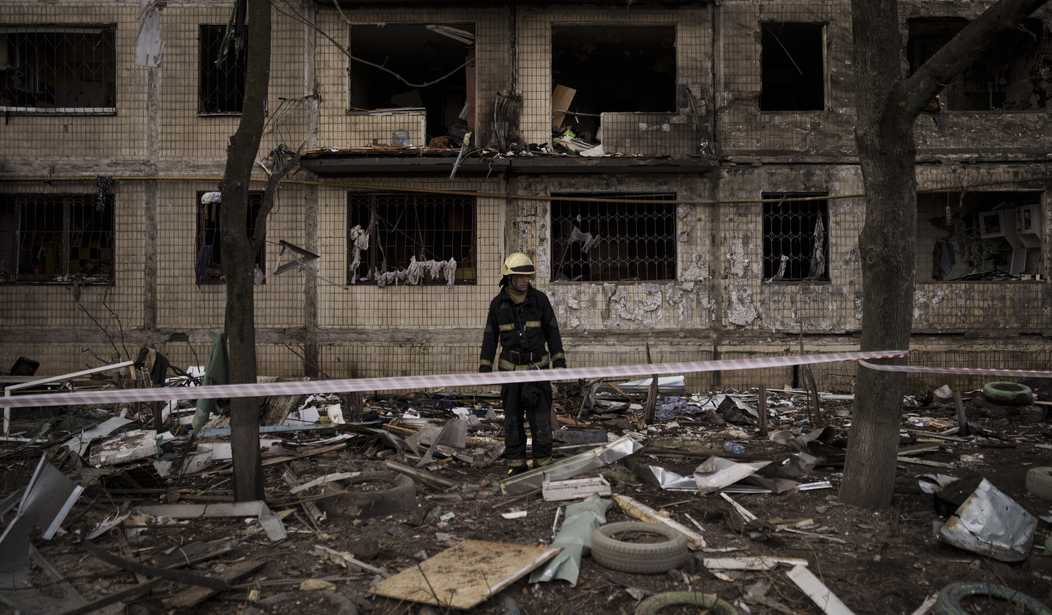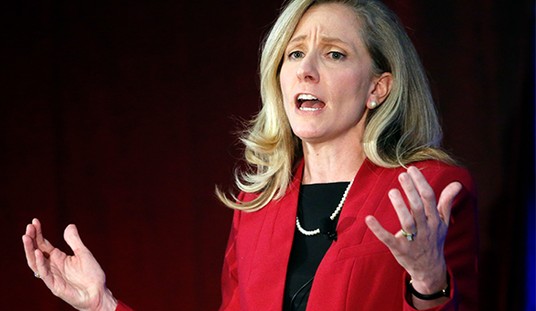Is this a case of bravery and “leading from the front” or a foolish risk? While large parts of the Russian offensive against the Ukrainian capital of Kyiv remain “stalled,” there are some advancements being made and attacks have intensified in the central areas of the city. And yet the leaders of Poland, the Czech Republic, and Slovenia are all traveling to Kyiv today to inspect the current situation. We have to wonder how they’re going to manage the security of these leaders as they travel into the midst of what can only be described as a war zone. The Russians have been shelling civilian apartment buildings and even a maternity hospital in recent days. While some of that may be intentional, other strikes have been viewed by analysts as simple cases of incompetence on the part of the Russian army. It’s unclear if they could avoid hitting the diplomatic emissaries if they wanted to. (Associated Press)
The leaders of Poland, the Czech Republic and Slovenia are traveling on Tuesday to Kyiv, Ukraine’s capital which is currently under fire, on a European Union mission to show support for Ukraine as Russia’s invasion intensifies.
Czech Prime Minister Petr Fiala said in a tweet: “The aim of the visit is to express the European Union’s unequivocal support for Ukraine and its freedom and independence.”
He will be joined by Slovenian Prime Minister Janez Janša, Polish Prime Minister Mateusz Morawiecki and Jaroslaw Kaczynski, who is Polish the deputy prime minister for security but also the conservative ruling party leader.
Russia’s offensive in Ukraine edged closer to central Kyiv on Tuesday, with a series of strikes hitting a residential neighborhood in the capital as the two countries planned a second day of talks.
We already saw one journalist killed in Kyiv this week and another one wounded. That may have been a case of unintentional collateral damage during the fog of war or an intentional act on the orders of Vladimir Putin. (There have been repeated reports suggesting that the Russians are targeting journalists to discourage reporting on the war.) No matter which of those scenarios is the reality, the end result is the same. Nobody’s security can be assured in the Ukrainian capital.
But if you move from killing journalists to taking out the elected leaders of NATO nations, now we’re at an entirely different level. What is NATO’s response if any of those leaders are killed by a Russian military strike while visiting the capital? Would that automatically trigger Article 5? Or would their deaths be written off as an unanticipated tragedy in a war zone?
What the leaders of these eastern European nations do is obviously none of my business, but if Joe Biden was announcing plans for a trip to Kyiv about now I would be objecting strenuously. When presidents previously visited locations in Afghanistan prior to our withdrawal, they always went in unannounced and were kept in areas secured by our substantial military presence. Doing otherwise would offer too tempting of a target for bad actors. Those conditions are not available in Kyiv. I’m not even positive that we can write off the possibility of some Ukrainian fighters going after this group in the hopes that it would drag NATO’s military forces into the fray on Ukraine’s side.
Meanwhile, the unfolding events in Ukraine now have some analysts asking if we need to “rethink” America’s role in Europe. Donald Trump set a new precedent during his tenure, calling on Europe to pay for more of its own defense needs and announcing plans to draw down the American military presence there. Joe Biden has reversed those plans already (as with virtually everything else Trump accomplished) but now we may be looking at a permanent American military presence in Europe not seen since the cold war.
“We are in a new era of sustained confrontation with Russia,” says Alexander Vershbow, a former U.S. ambassador to Russia and former deputy secretary-general of NATO. He argues that the United States, in cooperation with NATO allies, will need to establish a more muscular stance to deal with a more threatening Russia. That is especially so in Eastern Europe, where Russia’s proximity poses a problem for the three Baltic nations that are former Soviet states.
Defense Secretary Lloyd Austin was flying to Europe on Tuesday for his second recent round of Ukraine consultations at NATO headquarters in Brussels. He also will travel to two Eastern European NATO countries — Slovakia, which borders Ukraine, and Bulgaria, which does not. After a NATO meeting last month, Austin visited two other allies on the eastern flank — Poland and Lithuania.
Is that really where we’re heading? It should be obvious at this point that the next phase of the cold war is upon us. But unlike last time, the new cold war is already showing signs that it can turn very hot at any time. If America is going to be shouldering the burden of securing the former Soviet satellite states, we will find ourselves tiptoeing up to the line of an open military engagement with Russia at any moment, even if accidentally. This isn’t a shift we should rush into without careful consideration and a solid plan as to how and where we will be deploying our forces. I’m not saying it should be ruled out entirely. Putin has proven himself to be a very real threat to the stability of Europe and the world. But we also don’t want to pave the way toward a nuclear war if it can still be avoided.








Join the conversation as a VIP Member